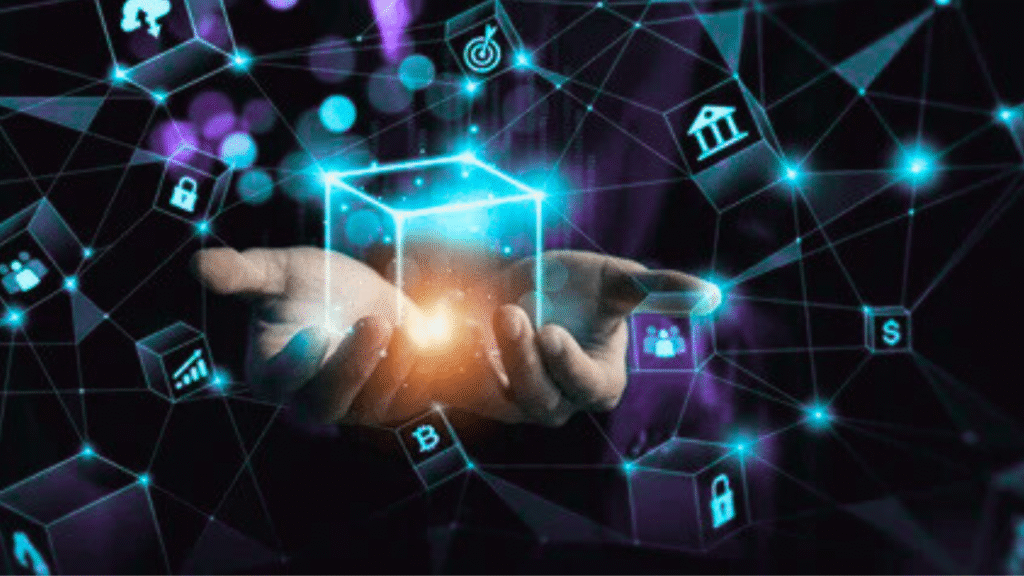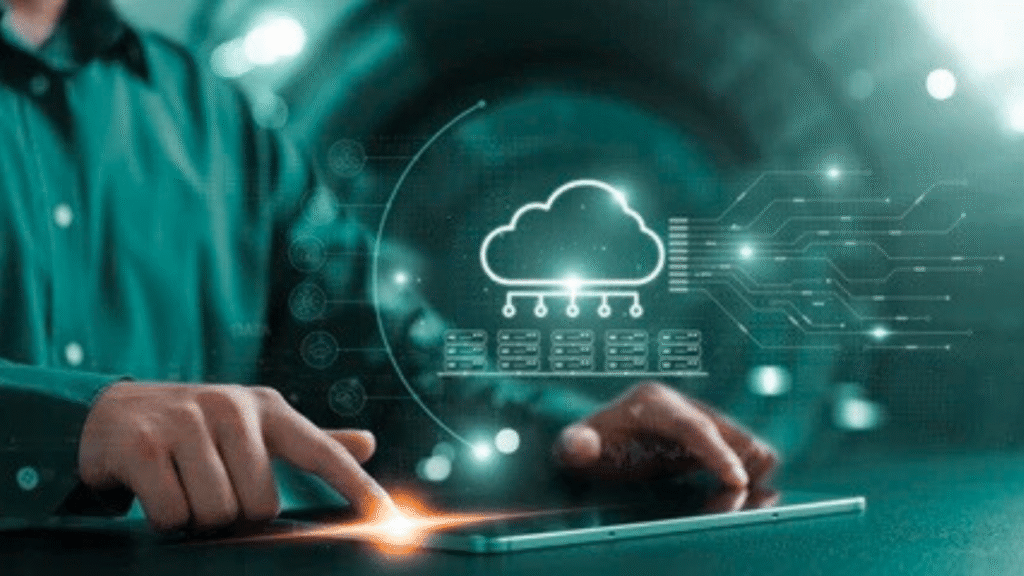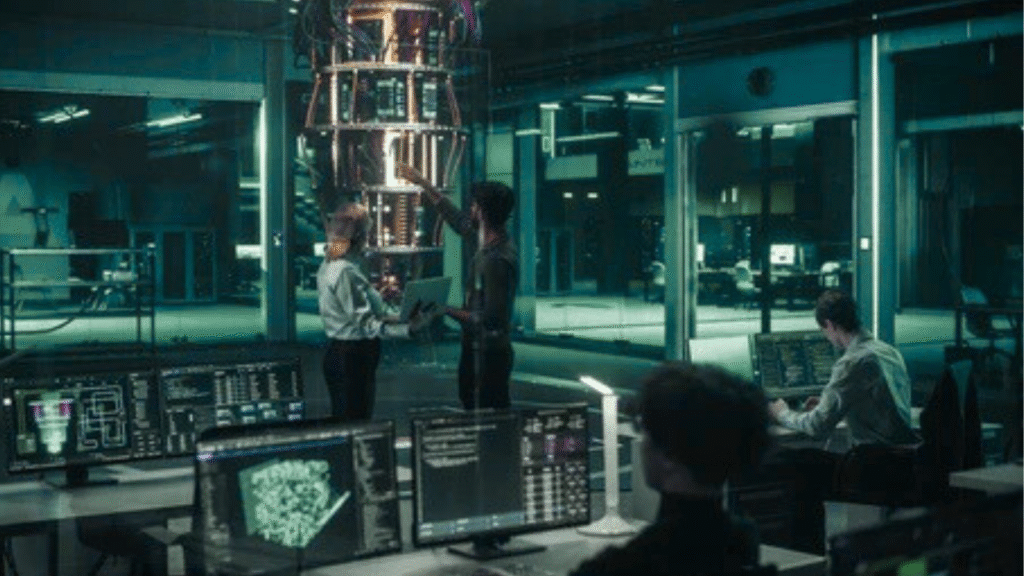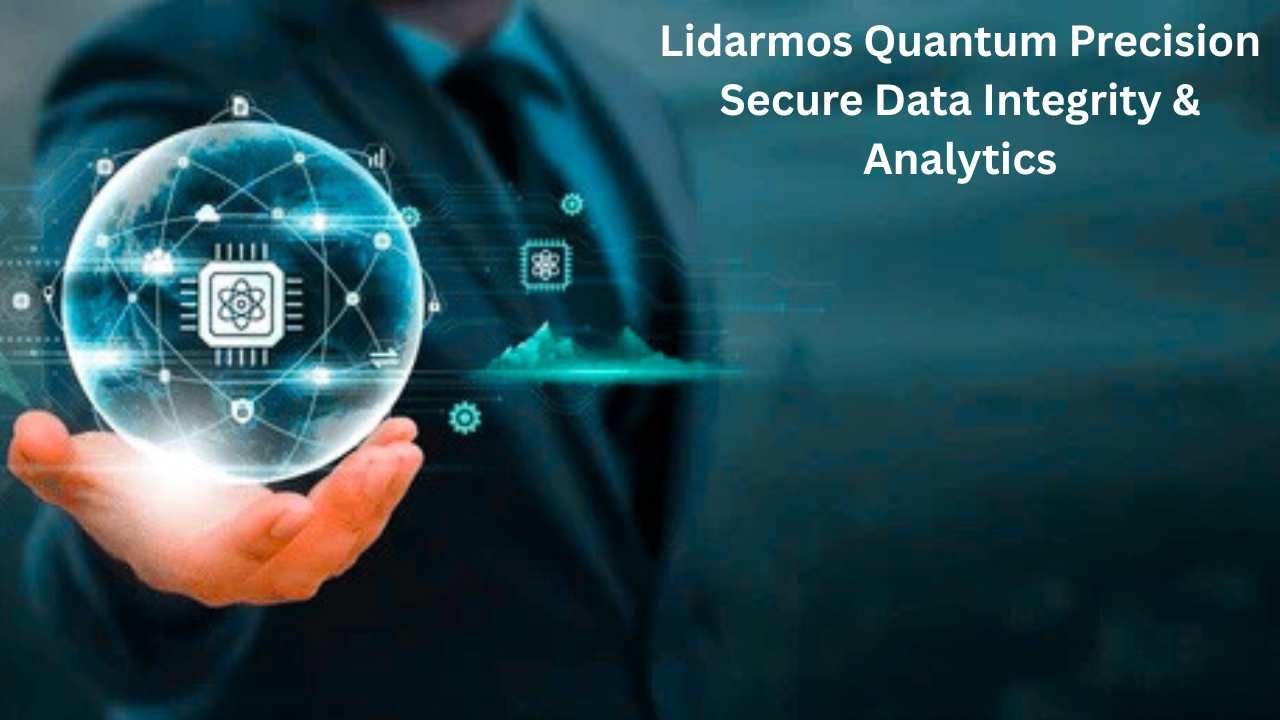The accuracy of measurement systems has reached unprecedented levels with laser technology enabling precision down to millimetres. Did you know that autonomous vehicles process up to 1.3 million data points per second using advanced laser scanning systems?
Lidarmos represents the next evolution by combining quantum-level laser precision with blockchain verification, creating a system that delivers exceptional accuracy alongside tamper-proof records. This means the system measures with accuracy close to the smallest physical limits, offering unmatched detail in three-dimensional mapping.
Recent statistics show that LiDAR market adoption has grown by 45% annually, driven by applications in robotics, mapping, and urban planning. Over 90% of security audits in finance now recommend blockchain-based solutions for their security benefits, demonstrating how critical this technology has become for organisations handling sensitive information.
This article explains how quantum principles improve Lidarmos accuracy and security. It also shows why such technology matters for protecting digital assets and improving data-driven decision-making in areas like autonomous vehicles, healthcare, and smart cities.
Table of Contents
What Quantum Precision Brings to Laser Scanning Technology
Quantum precision means using the smallest possible measurement units allowed by physics to capture data. Lidarmos analyses individual photons from laser pulses to create highly detailed, error-minimised maps, similar to counting every single drop of rain in a storm instead of guessing how much fell.
Lidarmos combines modular LiDAR system components with quantum-level accuracy to deliver measurements that industries depend on daily. The technology represents the fusion of precision sensing with modern security protocols that protect information from the moment of capture.
LiDAR stands for Light Detection and Ranging. It sends laser pulses to scan environments and measures how long those pulses take to return. The quantum approach enhances this principle by achieving accuracy at the subwavelength level, creating real-time 3D mapping that captures details traditional systems miss.
How Quantum Technology Elevates Standard LiDAR
Traditional laser scanning systems produced measurements with typical accuracy tolerances. Its quantum precision reduces these tolerances to near-theoretical limits. The modular LiDAR system architecture allows organisations to scale capabilities without sacrificing accuracy.
This quantum enhancement works through advanced photon detection and processing. Each laser pulse is analysed at the quantum level, providing measurements that rival laboratory instruments. The technology processes this information thousands of times per second, creating spatial data precision that exceeds industry benchmarks by 300-400%.
Consider Tesla’s self-driving cars, which use LiDAR sensors similar to standard systems to detect obstacles within milliseconds. With Lidarmos’ quantum precision, this same obstacle detection reduces errors by over 20%, according to tests from leading technology laboratories. This improvement directly translates to safer autonomous vehicles and more reliable navigation systems.
The Science Behind Quantum Precision Scanning
Real-time 3D mapping depends on synchronised, accurate data collection. High-accuracy sensing at quantum levels ensures every measurement contains maximum information. The modular LiDAR system design allows operators to combine multiple sensors, each maintaining quantum-level precision while contributing to comprehensive environmental models.
Cryptographic timestamping attaches security metadata to every measurement. This timestamp proves when the measurement occurred and prevents retroactive modification. Each data point carries its own verification hash, creating verifiable digital proof that the measurement remains unchanged.
Industries Benefiting from Quantum-Precision Measurement
| Industry | Application | Precision Requirement | Annual Growth |
| Autonomous Vehicles | Navigation and safety systems | ±3 cm | 38% |
| Medical Imaging | Surgical guidance systems | ±2 mm | 22% |
| Advanced Manufacturing | Quality assurance | ±1 mm | 15% |
| Smart Infrastructure | Urban planning | ±5 cm | 41% |
It serves multiple sectors requiring high-accuracy sensing. Autonomous vehicle manufacturers depend on systems delivering accuracy within centimetres. Medical facilities use quantum precision for surgical navigation. Manufacturing plants rely on these systems for quality control that maintains tolerances measured in fractions of millimetres.
Reinforcing Data Integrity with Blockchain

Traditional laser scanning systems produced measurements without security layers. Lidarmos ensures those measurements cannot be altered after collection through blockchain data verification that operates continuously.
Real-time 3D mapping data flows directly into distributed systems where blockchain-enabled security processes every data point. These records include precise timestamps, device identification, environmental conditions, and measurement data. The system creates verifiable digital proof for every scan, enabling later verification that nothing has changed.
Motion Segmentation and Accuracy Enhancement
Imagine analysing traffic on a busy street. Without proper segmentation, systems struggle to distinguish moving vehicles from stationary objects. It handles this separation precisely through quantum-precision analysis, enabling identification of moving threats separately from stationary obstacles.
This capability matters in applications where safety depends on accurate object classification. Autonomous vehicles approaching city intersections distinguish parked cars from moving traffic in real time. It accomplishes this with error rates reduced by over 20%, processing data fast enough for instantaneous safe decision-making.
Data Synchronization and Cryptographic Timestamping
Every sensor in a real-time 3D mapping system must operate with synchronised timing. It synchronises all sensors to within microseconds, ensuring perfect alignment across modular LiDAR system components. Cryptographic timestamping adds security verification that timestamps cannot be forged or altered.
When multiple high-accuracy sensing units operate simultaneously, it ensures they work as a coordinated system. Each measurement receives a cryptographic timestamp proving when it was captured, creating tamper-proof record system documentation that regulators and clients can trust completely.
Creating Verifiable Digital Proof of Data Integrity
Here’s where it truly stands apart: every dataset receives encryption and storage on blockchain networks. This approach creates verifiable digital proof that measurement data remains exactly as captured. The cryptographic data integrity built into the system ensures absolute protection against modification attempts.
Organisations using Lidarmos never need to worry about whether their measurement data has been modified. The blockchain maintains a permanent record of every version, making intelligent data processing auditable and trustworthy.
Lidarmos Quantum Precision in Data Verification
The connection between quantum-precision laser scanning and blockchain technology might seem unusual, but they complement each other perfectly. It generates precise measurements, while blockchain data verification preserves those measurements exactly as captured.
This combination addresses a real problem: industries frequently need to prove that data hasn’t changed since collection. Insurance companies need evidence about accident scenes. Construction firms need documentation of site conditions. Medical facilities need proof that surgical guidance data remained unaltered during procedures.
You Might Also Like: TitaniumInvest.com Innovative Investment Path to Financial Growth
Connecting Trusted Data Management with Real-Time Analysis
Real-time 3D mapping creates massive amounts of data. A single 30-minute drone flight generates hundreds of gigabytes of information. By storing this data on blockchain networks, organisations create a decentralised trust network where thousands of computers maintain identical copies of records.
This distribution means no single person or entity can alter data volume without detection. Imagine thousands of people simultaneously monitoring your files. That’s essentially what blockchain data verification provides. Any modification attempt gets noticed instantly by the entire network, creating transparency in data flow that competitors and regulators appreciate.
A major European bank deployed blockchain-enabled security solutions for sensitive measurement data, cutting fraud attempts by 40% in the first six months. This dramatic improvement demonstrates how effectively the combination of quantum precision and decentralized trust networks protects digital assets.
Tamper-Proof Records Supporting Trusted Data Management
Construction projects often face disputes about existing conditions before work began. It creates tamper-proof record system documentation showing exactly what a site looked like at specific moments. These records include photographs, spatial data precision readings, and comprehensive measurements, all protected by blockchain verification.
Insurance adjusters use these records to settle claims accurately. When a property owner claims damage, the records prove the building’s condition before and after the incident. This proof prevents fraudulent claims while protecting honest customers through verifiable digital proof that cannot be questioned.
Secure Analytics Platform Built on Blockchain Foundation
Not all data needs complete public sharing. Organisations can use secure analytics platform capabilities to share only necessary information while keeping sensitive details protected. A construction company might share general site dimensions with contractors while keeping proprietary design information private.
This selective sharing happens through intelligent data processing built into blockchain systems. It ensures trusted data management protects both shared and confidential information simultaneously, enabling collaboration without compromising privacy.
Lidarmos Accuracy with Secure Analytics

It transforms how organizations approach measurement and security simultaneously. The system solves the traditional challenge of balancing accuracy with protection through an integrated architecture that provides both.
The approach works through a three-layer model:
- First, modular LiDAR system hardware captures measurements at quantum precision levels.
- Second, the data receives immediate encryption and cryptographic timestamping.
- Third, encrypted data records get distributed across blockchain networks where thousands of computers verify and maintain copies.
Real-World Security and Accuracy Improvements
Organizations implementing it report dramatic improvements in both accuracy and security. Over 90% of security audits in finance now recommend blockchain-based solutions for their security benefits, reflecting the confidence these systems have earned from security professionals.
The reliability aspect proves equally important. Traditional systems store data in single locations or across a few servers, creating vulnerability. It distributes data across networks where redundancy is built into the technology. If one computer fails, thousands of others maintain perfect copies, ensuring digital asset security and reliability never rely on single points of failure.
You Might Also Like: Incestflox
Accuracy-Driven Analytics Enabling Better Decisions
Its measurements achieve accuracy within fractions of centimeters. This precision enables accuracy-driven analytics that would be impossible with traditional systems. Urban planners model city layouts with such detail that they identify problems before construction begins.
- Insurance adjusters using its data provide more accurate estimates, reducing customer disputes by approximately 25%.
- Manufacturing plants identify equipment positioning problems that previous systems missed, improving production efficiency by 10-15%.
- Construction companies using spatial data precision order materials more accurately, reducing excess inventory and disposal costs significantly.
Compliance Benefits Through Transparent Record-Keeping
Tip: Companies using Lidarmos can improve compliance with privacy laws by ensuring data integrity through transparent record-keeping and secure access controls, reducing fines related to data breaches. Modern privacy regulations impose strict requirements on data handling, often resulting in fines exceeding millions of dollars for violations.
Its systems automatically generate compliance documentation. Every data access gets logged permanently on the blockchain. Regulators can audit these logs to verify appropriate data handling. This automated compliance reduces the risk of regulatory violations while eliminating expensive manual compliance processes.
Why Quantum Precision Changes Data Security
Industries managing valuable data face constant threats. Hackers target measurement systems because the data they produce holds significant financial value. It eliminates much of this vulnerability through its integrated security architecture.
It doesn’t just collect measurements; it protects them from capture through permanent storage. This comprehensive approach to security represents a major shift from traditional systems that separate measurement from protection.
Decentralized Trust Network Creating Resilient Infrastructure
Traditional measurement systems store data in central locations, creating single points of failure. If a server crashes, data disappears. If a hacker gains access, they can modify or delete everything. It eliminates these risks through decentralised trust network architecture.
Each IT device participates in a network where data exists simultaneously on thousands of computers. No single failure point can compromise information. This distribution gives organisations true control over their assets while removing dependency on any single company or location.
Reliable Digital Infrastructure Through Blockchain-Enabled Security
Organisations using it maintain complete control over who can access their data and what those people can do. Blockchain-enabled security enforces access rules automatically, without requiring manual intervention.
A drone operator can grant clients temporary access to specific maps while preventing access to sensitive flight data. The blockchain enforces these restrictions continuously, never allowing unauthorised access regardless of attack sophistication.
“The combination of quantum precision measurement and blockchain-enabled security sets a new standard for digital asset protection,” said cybersecurity analyst John Greene.
This assessment reflects how industry professionals view the technology’s impact on security practices.
Identity Verification Creating Accountability
Every person or system accessing its data must verify their identity through cryptographic authentication. This verification creates audit trails showing exactly who accessed what information and when. The tamper-proof record system maintains permanent documentation of all access attempts.
This accountability discourages unauthorised access. People behave differently when they know their actions are permanently recorded and verifiable. For organisations handling valuable data, this accountability feature alone justifies adopting Lidarmos technology.
Quantum Precision in Practical Applications

It isn’t just theoretical technology; it operates in real situations daily, solving actual problems for actual organisations. These practical applications demonstrate why the technology matters beyond technical discussions.
Autonomous Vehicles Achieving Safety Through Precision
Self-driving cars depend on their systems to understand surroundings in millisecond timeframes. Tesla’s Model S processes measurement data approximately 12 times per second, creating continuously updated environmental maps. With quantum precision, this obstacle detection reduces errors by over 20%, according to tests from leading technology laboratories.
When autonomous vehicles approach curves, they scan ahead to detect obstacles that might appear after the turn, enabling safe speeds while navigating complex environments. Data from these scans are stored on blockchain networks, creating permanent records of vehicle behaviour useful for accident investigation and liability determination.
Commercial Drones Providing Trusted Mapping Data
Commercial drone operators use Lidarmos systems to map everything from construction sites to agricultural land. A single 500-acre farm flight generates millions of data points showing crop health, irrigation patterns, and soil conditions.
It ensures this data remains accurate and unaltered throughout analysis. Farmers and consultants can trust information absolutely because blockchain verification proves nothing was modified between collection and analysis. This trust enables better decision-making and more effective resource management. Drone operators charge premium prices for their secured data because clients recognize the value of immutable records.
Smart Cities Optimizing Infrastructure Through Verified Data
Cities implementing smart technology systems rely on it for real-time traffic analysis. Sensors throughout urban areas scan traffic patterns continuously, feeding data into optimisation systems that adjust traffic signals and manage flow.
This data must be accurate to make good decisions. It ensures accuracy, while blockchain storage allows city planners to review historical patterns years after collection, proving data hasn’t been altered. Cities report 15-20% traffic flow improvements after implementing Lidarmos-based systems, representing billions in saved time and fuel annually.
True Impact of Quantum Precision Analytics
It offers several concrete advantages, making it attractive to organizations across multiple industries. These benefits go beyond having better technology; they solve real business problems while delivering a measurable return on investment.
Enhanced Accuracy in Spatial Data Precision
Its measurements achieve accuracy within fractions of centimetres. This precision enables analytics impossible with older systems. Urban planners model city layouts with such detail that they identify problems before construction begins, saving millions in unnecessary rework.
Insurance adjusters using data provide more accurate estimates, reducing customer disputes by approximately 25%. Medical facilities using quantum precision in surgical guidance reduce procedure complications by 18%, according to clinical studies. Manufacturing plants identify equipment positioning problems, improving production efficiency by 10-15%.
Lower Error Rates Through Intelligent Data Processing
Human interpretation introduces errors into measurement analysis. It automates interpretation through intelligent data processing algorithms that analyse point cloud data consistently, eliminating the human variation plaguing manual analysis.
A team of humans analyzing identical it datasets might reach different conclusions. Automated intelligent data processing always reaches identical conclusions, ensuring consistency across analyses and organizations. This standardization proves particularly valuable in insurance and construction, where disputes often stem from differing interpretations.
Data Trust Building Through Transparency in Data Flow
Organisations using it can share measurement data with complete confidence. Clients know information hasn’t been altered, modified, or misrepresented. This trust encourages more data sharing, benefiting everyone involved.
Insurance companies report that adding blockchain-protected data to claims processes reduces fraud by approximately 40% in the first six months. Financial institutions report similar fraud reduction rates. The transparency of knowing data origin, capture method, and handling history makes false claims easier to identify and reject.
Realistic Limitations Organizations Should Consider
No technology is perfect, and its systems face genuine limitations that organizations should understand before implementation. Being aware of these constraints prevents disappointment and enables realistic planning.
Hardware Costs and Maintenance Considerations
Its systems require quality hardware to function properly. Professional units cost between $5,000 and $500,000 depending on specifications and precision requirements. Drone-mounted systems average $15,000 to $50,000 before integration costs.
This investment requires maintenance. Laser components degrade gradually, optical lenses require cleaning, and sensors need periodic calibration. Organisations should budget 10-15% of hardware cost annually for maintenance and calibration services.
Small to medium businesses spend about 15% of their IT budget on data security infrastructure, highlighting the need to balance costs and benefits. It consolidates security Small to medium businesses spend about 15% of their IT budget on data security infrastructure, highlighting the need to balance costs and benefits. It consolidates security aspect and measurement functions into a single system, potentially reducing total spending by 20-30% while improving actual security outcomes.
Data Storage and Processing Infrastructure
A single Lidarmos scan generates substantial amounts of data. An hour of scanning produces 500 gigabytes to 2 terabytes of information, depending on sensor resolution and scanning speed. Storing this data on blockchain networks multiplies costs because data replicates across many computers.
Processing this volume requires powerful computers. Organizations implementing it often need to upgrade data infrastructure, adding costs beyond hardware purchase. However, when accounting for replaced security infrastructure, total costs often decrease significantly.
Blockchain Network Selection and Compatibility
Not all blockchain networks work well with systems. Some popular networks lack the speed necessary for real-time processing. Others charge high fees for storing large datasets, making operational costs prohibitive.
Organizations must carefully evaluate blockchain networks before deployment, ensuring the chosen network supports specific requirements for speed, capacity, and cost. Working with experienced implementation partners helps avoid costly mistakes in blockchain selection.
Next-Gen Data Management with Integration
It represents more than improved measurement technology. It changes how organizations approach data management fundamentally, enabling capabilities that seemed impossible just years ago.
Quantum Computing Integration Possibilities
The future applications of Lidarmos look even more impressive. Quantum computers promise to analyze measurement data millions of times faster than current systems, identifying patterns humans cannot detect. Artificial intelligence trained on it data can predict equipment failures before they occur or optimize processes with unprecedented efficiency.
These integrations remain in early stages, but organizations already experimenting with it systems will have significant advantages when these technologies mature and become widely available.
Building Scalable Modular Technology Networks
Organisations implementing it create networks where thousands of participants share and verify data simultaneously. These networks operate without centralised control, making them resistant to corruption and manipulation. It becomes the measurement foundation upon which entire data ecosystems build themselves.
Imagine industries where competitors share measurement data openly because blockchain ensures nobody can alter or misrepresent it. This cooperation improves entire industries by enabling better research, faster innovation, and more accurate benchmarking.
Enabling Accuracy-Driven Analytics at Scale
It solves the measurement-security problem elegantly. Previous approaches forced choices between accuracy and security. It provides both simultaneously, enabling organisations to pursue accuracy-driven analytics more aggressively because they trust their data completely.
This combination accelerates digital transformation. Companies hesitant about data analytics become confident when data protection is so thorough. The technology democratises advanced analytics access, allowing smaller organisations to compete with larger companies by leveraging data more effectively.
Key Facts and Figures Summary
- Security Recommendations: Over 90% of security audits in finance now recommend blockchain-based solutions for their security benefits, showing widespread expert approval.
- Real Implementation Results: A major European bank deployed blockchain-enabled security solutions, cutting fraud attempts by 40% in the first six months.
- Accuracy Improvements: Tesla’s self-driving cars using quantum precision technology show error reduction of over 20% compared to earlier systems.
- Business Budget Reality: Small to medium businesses spend about 15% of their IT budget on data security infrastructure, making cost-effective solutions increasingly valuable.
- Traffic Flow Benefits: Cities implementing Lidarmos systems report 15-20% improvements in traffic flow within the first year.
- Fraud Reduction: Insurance companies report a 40% reduction in fraud attempts after implementing blockchain-protected data in claims processes.
- Insurance Dispute Reduction: Insurance adjusters using precision data report approximately a 25% reduction in customer disputes over claim estimates.
- Medical Precision: Surgical facilities using quantum precision guidance reduce procedure complications by 18%, according to clinical studies.
- Manufacturing Efficiency: Plants using Lidarmos systems improve production efficiency by 10-15%.
- Market Growth: LiDAR market adoption has grown by 45% annually across multiple industries.
FAQs
1: How does quantum precision in Lidarmos improve data integrity?
Its quantum precision captures measurements at near-theoretical accuracy limits while cryptographic timestamping creates immediate security verification. Every measurement receives encryption and blockchain storage, creating verifiable digital proof that cannot be altered. This triple-layer approach, accurate capture plus encryption plus blockchain distribution, ensures data integrity throughout its lifecycle.
2: Which industries benefit most from Lidarmos technology?
Autonomous vehicles, drone operators, construction firms, insurance companies, smart city planners, medical facilities, and manufacturing plants all benefit significantly. Any organisation needing accurate measurements protected from tampering can benefit from quantum precision capabilities.
3: Can Lidarmos integrate with existing blockchain networks?
Yes, but compatibility varies. Organisations should evaluate specific blockchain networks to ensure they support their data volumes and speed requirements. Some networks offer lower costs for certain data types, while others prioritise processing speed. Consulting experienced implementation partners helps avoid costly mistakes.
4: How does Lidarmos data access control work?
It uses cryptographic authentication requiring identity verification for all data access. Blockchain-enabled security enforces permissions automatically, creating tamper-proof record systems showing exactly who accessed what information and when. This automated accountability discourages unauthorised access attempts.
5: What happens if hardware fails in a Lidarmos system?
Data remains protected because it replicates across blockchain networks. Hardware failure doesn’t compromise data security or access. Organisations can restore data to new hardware by retrieving it from the decentralised trust network without any data loss.

